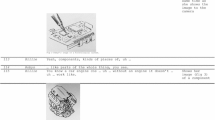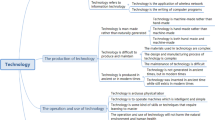Abstract
Knowledge of technology is an educational goal of science education. A primary way of increasing technology literacy in a society is to develop students’ conception of technology starting from their elementary school years. However, there is a lack of research on student recognition of and reasoning about technology and technological artifacts. In this respect, the purpose of this study was to determine elementary school students’ recognition of and reasoning about technological artifacts. In line with this purpose, a survey was conducted with 239 elementary school students from Turkey. For the analysis of the quantitative data collected, independent sample t test, one-way ANOVA and descriptive statistics were used. For the analysis of the qualitative data, content analysis was used. The results revealed that the students’ recognition of and reasoning about technological artifacts were not wrong yet not efficient. In addition, it was also found out that the students’ technology recognition differed depending on the socioeconomic levels of their schools in relation to digital divide and on their parents’ educational backgrounds. When the students’ views were examined, it was seen that electricity was a requirement for anything to be regarded as technology. Suggestions were put forward for researchers, teachers as well as for parents regarding students’ understanding of technology.



Similar content being viewed by others
References
Aydın, F. (2011). Identifying ideas of 6th, 7th and 8th grade students for technology with drawings. In 2nd International Conference on New Trends in Education and Their Implications ICONTE. Antalya-Turkey.
Bennett, R. (1996). An investigation into some Key Stage 2 children’s learning of foundation concepts associated with geared mechanisms. Journal of Design & Technology Education, 1(3), 218–229.
Braun, V., & Clarke, V. (2006). Using thematic analysis in psychology. Qualitative Research in Psychology, 3, 77–101.
Carey, S., Evans, R., Honda, M., Jay, E., & Unger, C. (1989). An experiment is when you try it and see if it works: A study of grade 7 students’ understanding of the construction of scientific knowledge. International Journal of Science Education, 11, 514–529.
Cooper, J. (2006). The digital divide: The special case of gender. Journal of Computer Assisted Learning, 22(5), 320–334.
Cunningham, C. M., Lachapelle, C., & Lindgren-Streicher, A. (2005). Assessing elementary school students’ conceptions of engineering and technology. Portland: American Society of Engineering Education.
Davies, R. S. (2011). Understanding technology literacy: A framework for evaluating educational technology integration. TechTrends, 55(5), 45–52.
Davis, R. S., Ginns, I. S., & McRobbie, C. J. (2002). Elementary school students’ understandings of technology concepts. Journal of Technology Education, 14(1), 35–50.
de Vries, M. J. (2005). Teaching about technology: An introduction to the philosophy of technology for non-philosophers. Science & Technology Education Library (Vol. 27). Springer.
DiGironimo, N. (2011). What is technology? Investigating student conceptions about the nature of technology. International Journal of Science Education, 33(10), 1337–1352.
Griffiths, A. K., & Heath, N. P. (1996). High school students’ views about technology. Research in Science & Technological Education, 14(2), 153–162.
Gustafson, B. J., Rowell. P. M. & Rose, D. P. (1998). Elementary children’s conceptions of structural stability: A three year study. Paper presented at the annual meeting of the National Association for Research in Science Teaching, San Diego.
Hohlfeld, T. N., Ritzhaupt, A. D., Barron, A. E., & Kemker, K. (2008). Examining the digital divide in K-12 public schools: Four-year trends for supporting ICT literacy in Florida. Computers & Education, 51(4), 1648–1663.
Huck, S. W. (2008). Reading statistics and research (5th ed.). Boston: Pearson.
Hutchby, I., & Moran-Ellis, J. (Eds.). (2001). Relating children, technology and culture. In Children, technology, and culture: The impacts of technologies in children’s everyday life (pp. 1–10). New York: Routledge.
Jarvis, T., & Rennie, L. J. (1998). Factors that influence children’s developing perceptions of technology. International Journal of Technology and Design Education, 8(3), 261–279.
Jones, A., & Moreland, J. (2003). Developing classroom-focused research in technology education. Canadian Journal of Math, Science & Technology Education, 3(1), 51–66.
Levinson, R., Murphy, P., & McCormick, R. (1997). Science and technology concepts in a design and technology project: A pilot study. Research in Science and Technology Education, 15(2), 235–255.
Lewis, T. (1999). Research in technology education—Some areas of need. Journal of Technology Education, 10(2), 41–55.
Liamputtong, P. (2009). Qualitative research methods (3rd ed.). Melbourne: Oxford University Press.
Mawson, B. (2010). Children’s developing understanding of technology. International Journal of Technology and Design Education, 20(1), 1–13.
Miles, M. B., Huberman, A. M., & Saldaña, J. (2013). Qualitative data analysis: A methods sourcebook. Incorporated: SAGE Publications.
Paau, A. S. (2001). What is technology? Computer Fraud & Security, 7(1), 17–19.
Ritzhaupt, A. D., Liu, F., Dawson, K., & Barron, A. E. (2013). Differences in student information and communication technology literacy based on socio-economic status, ethnicity, and gender: Evidence of a digital divide in Florida schools. Journal of Research on Technology in Education, 45(4), 291–307.
Rose, L. C., Gallup, A. M., Dugger Jr, W. E. & Starkweather, K. N. (2004). The second installment of the ITEA/Gallup poll and what it reveals as to how Americans think about technology: A report of the second survey conducted by the Gallup organization for the International Technology Education Association. Technology Teacher, 64(1).
Sutopo, S., & Waldrip, B. (2013). Impact of a representational approach on students’ reasoning and conceptual understanding in learning mechanics. International Journal of Science and Mathematics Education, 11(4), 1–24.
Thorsteinsson, G. & Olafsson, B. (2015). Piloting technological understanding and reasoning in Icelandic schools. International Journal of Technology and Design Education, 1–15. doi:10.1007/s10798-015-9301-8.
Twyford, J., & Jarvinen, E. M. (2000). The formation of children’s technological concepts: A study of what it means to do technology from a child’s perspective. Journal of Technology Education, 12(1), 32–48.
Volk, K., & Dugger, W. (2005). East meets west: What Americans and Hong Kong people think about technology. Journal of Technology Education, 17(1), 53–68.
Williams, P. J. (2000). Design: The only methodology of technology. Journal of Technology Education, 11(2), 48–60.
Author information
Authors and Affiliations
Corresponding author
Rights and permissions
About this article
Cite this article
Firat, M. Growing misconception of technology: investigation of elementary students’ recognition of and reasoning about technological artifacts. Int J Technol Des Educ 27, 183–199 (2017). https://doi.org/10.1007/s10798-015-9351-y
Accepted:
Published:
Issue Date:
DOI: https://doi.org/10.1007/s10798-015-9351-y




